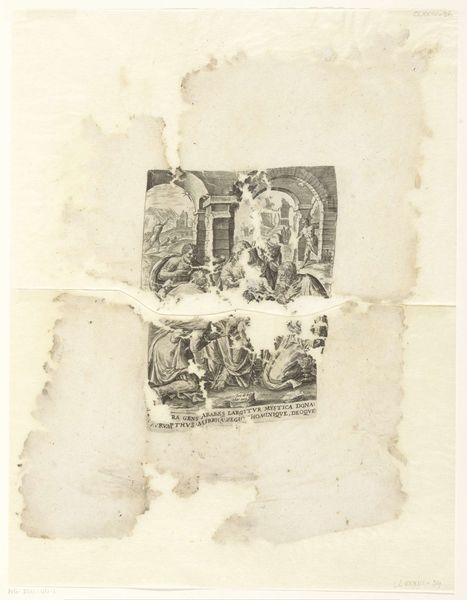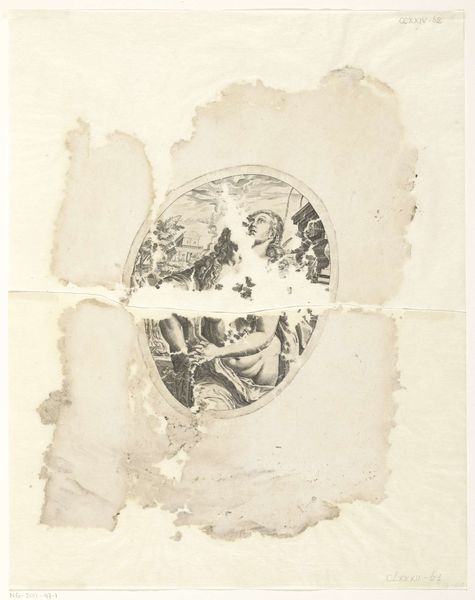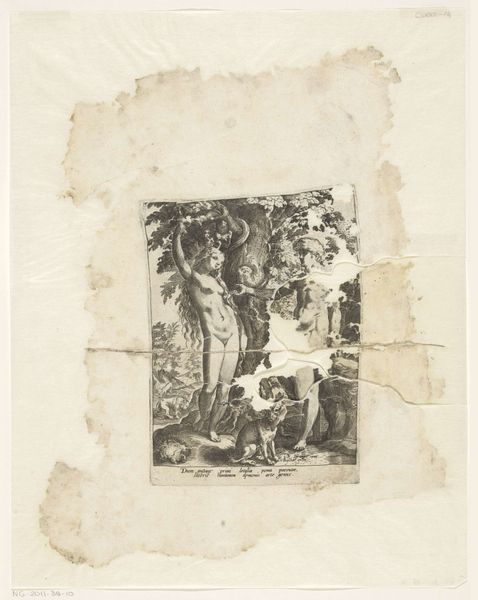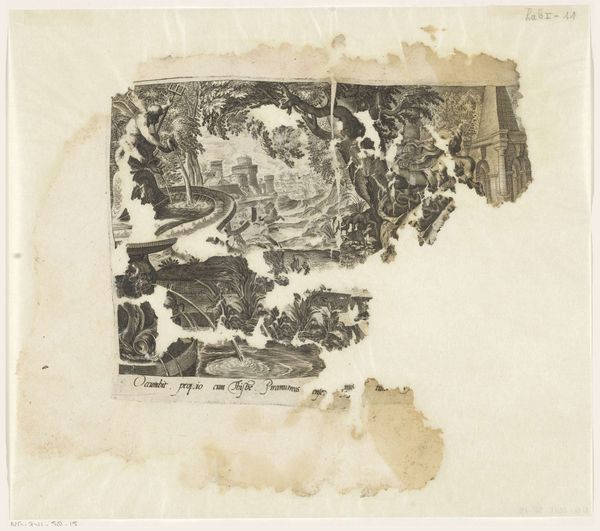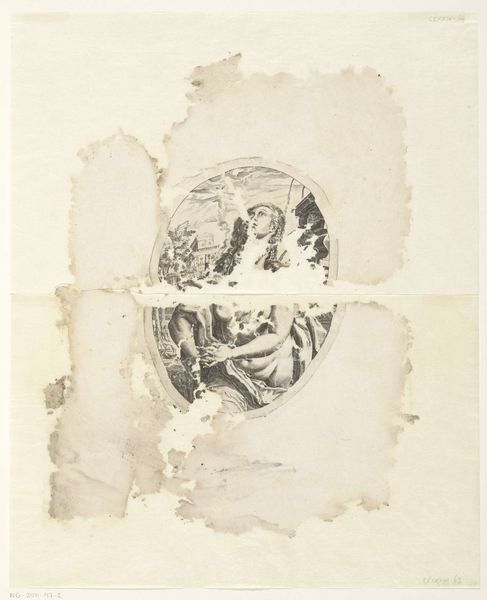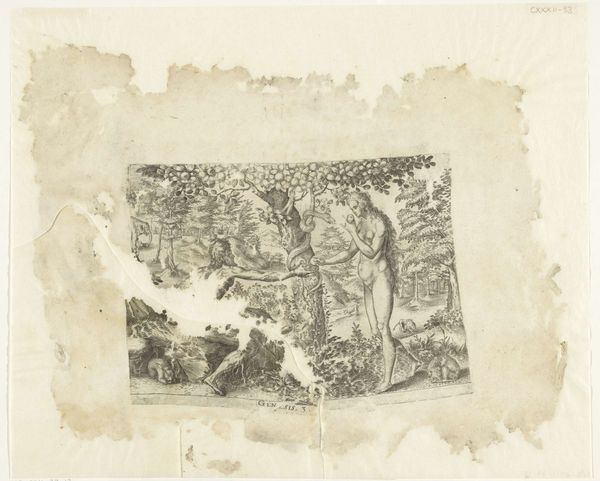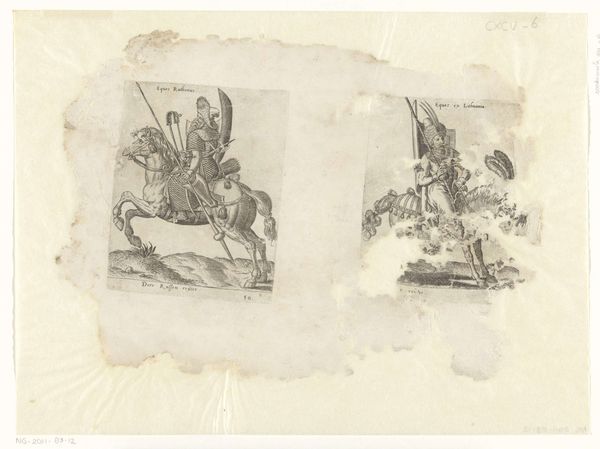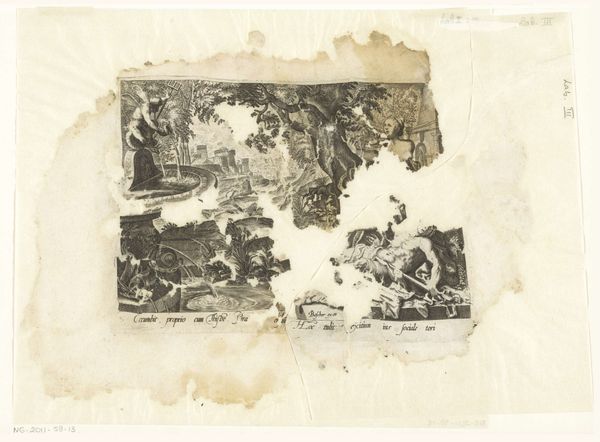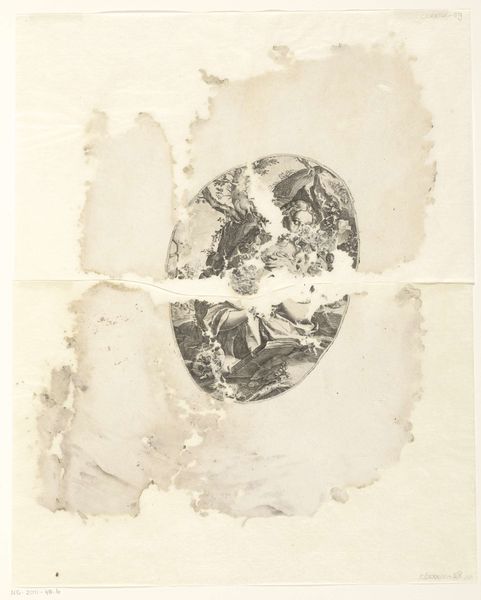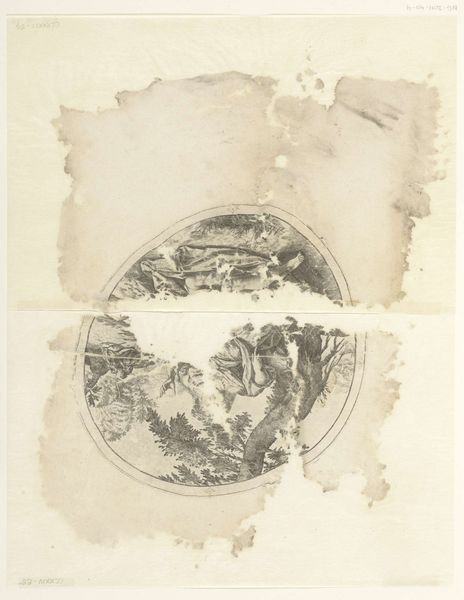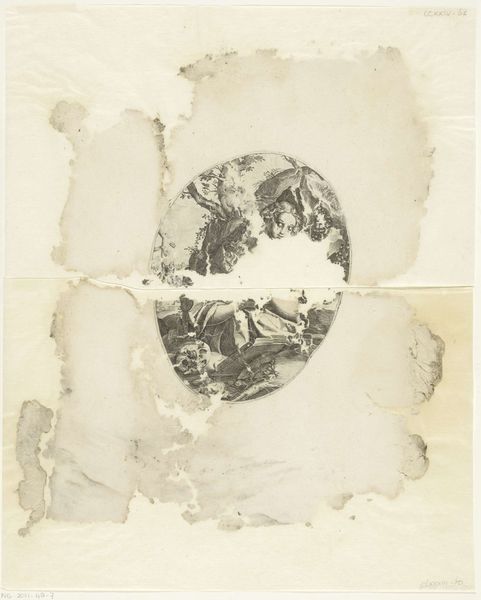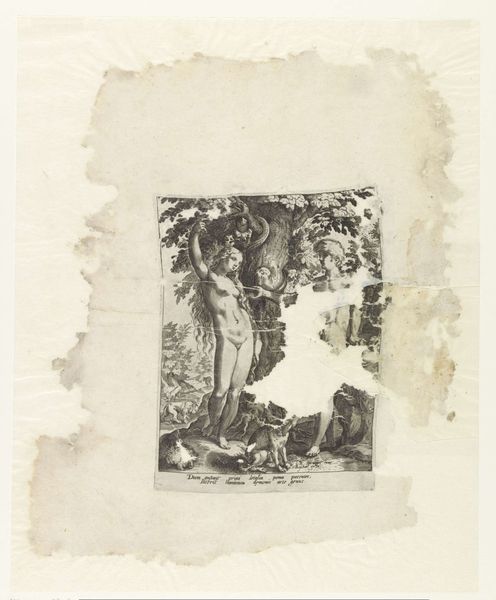
print, etching
# print
#
etching
#
etching
#
figuration
#
11_renaissance
#
history-painting
#
northern-renaissance
Dimensions: height 384 mm, width 304 mm
Copyright: Rijks Museum: Open Domain
Editor: We’re looking at "Adoration of the Magi" by Frans Floris I, created sometime between 1570 and 1596. It’s an etching, a print, and there’s something so intimate about the scene even with all these figures. The close groupings remind me of a theater stage. How would you interpret this work? Curator: Intimate, yes, but consider the context: the Northern Renaissance was all about visual drama and crammed compositions. The artist almost wants to overwhelm you! It's interesting how he split the adoration scene into two panels, it's like looking at related sequential paintings. But it's so interesting! Did you notice the text at the bottom? "A generous Arab tribe offer mystical gifts…" The lettering has such weight! Editor: Oh, you're right! I completely missed the text. Is this splitting of scenes common for depictions of this subject? Curator: It's unusual. Typically, the adoration is depicted as a unified event, but maybe Floris wanted to capture different stages of the ritual, from presentation to offering. What feelings does that split evoke for you? Editor: I guess it creates a sense of…pause? Like, time unfolding, rather than a snapshot. Like two sides of a coin, offering two perspectives. It is unusual, but adds more character. Curator: I think that's a lovely reading. It adds such weight to something so traditional! Perhaps Floris felt the weight of tradition, and this was his way of playing with it, subverting it even slightly. That print might be more subversive than it first appeared. Editor: It’s fascinating how just by moving a scene to the top or bottom of the frame, everything sort of changes! Thanks for showing a fresh take on this work.
Comments
No comments
Be the first to comment and join the conversation on the ultimate creative platform.
